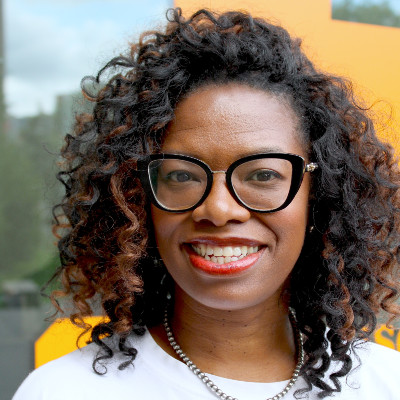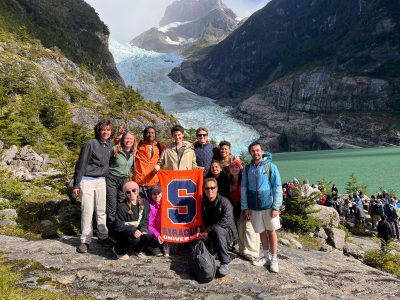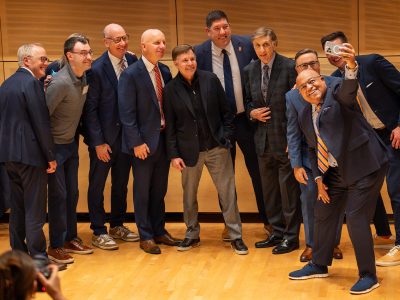Professor Heather Lavender Discusses STEM Ed and Building a High-Tech Workforce
As Central New York gears up as an advanced manufacturing hub, local and state government, development organizations, educators, unions and tech companies are collaborating on plans to educate and train a workforce capable of making these industrial investments a long-term success.
The employment requirements for chip fabricator Micron’s plan alone are 9,000 people over 20 years. The company observes it chose the Syracuse area “partly because of the region’s ‘access to talent.’”
Among area initiatives designed to prepare this talent are the Future-Ready Workforce Innovation Consortium, which includes Syracuse University; the University’s Center for Advanced Semiconductor Manufacturing; Empire State Development’s One Network for Regional Advanced Manufacturing Partnerships (ON-RAMP); the Advanced Technology Learning Framework, developed by teachers unions, Micron and New York State; and Syracuse City School District’s new STEAM high school.

One scholar deeply invested in how a high tech workforce is trained and how STEM subjects are taught in schools—especially to students from marginalized groups—is Heather Lavender, who joined the School of Education in August 2024 as assistant professor of inclusive STEM education.
A microbiologist, Lavender moved from the laboratory to the classroom to explore and improve how children receive science education. Here, Lavender weighs in on discrimination, resourcing schools, how marginalized groups foster innovation, and teaching teachers about equitable STEM education.
Tell us a more about your journey from microbiology to teaching to becoming a professor who researches equitable STEM education.
When I was a researcher among doctoral students who were women and women of color, I saw the abuse they endured. Throughout those years, I watched the tears and held their hair when they were sick due to a demoralizing experience.
I began to think, I could mentor better, and not just to women. I could offer equity of mentorship … Then at some point I thought, there is a space where you could reach even more people, further down the chain of education—influence how children learn.
I have always said, when it comes to education, I’m “girl crazy!” As a black female who worked in STEM, I’m all in for girls of color. That’s not to say I am not into helping others, but it’s a juggling act.
How do you address equitable STEM education among pre-service teachers?
Recently, I had my elementary education students read “It’s OK to Be Neither” … from “Rethinking Schools.”
In the essay, a teacher tells of one of her first graders—Allison—who dresses in clothes more typical of a boy and who wants to be called Allie. She is obviously uncomfortable in class. The teacher writes about her journey to make Allie feel like she belongs.
“I realized,” writes the teacher over again as she strives to make all her children feel comfortable with their choices and thus be more accepting of Allie. These lessons including having the class think about the toys they play with: are Legos only for little boys? What if a boy feels like playing with a doll?
Children’s activities with toys leads to STEM activity that is marketed and labeled by gender. My research shows that if a girl is prevented from playing with a toys labeled for boys, that girl can be hindered from following a path toward STEM.
“When you say nothing, you say something,” I tell my students. There are times when the nothing you say is louder.
Current criticisms of DEIA initiatives in education might suggest that equity in STEM fields has been achieved—is that really true?
During the Super Bowl in 2022, a public service announcement was aired addressing women and STEM careers. PSAs are for matters of public urgency. They run for free, and this is the most expensive airtime of the year. Tell me, if more women choosing STEM was a matter of public urgency in 2022, do we think that urgency has dissipated?
The marginalization of women and women of color in STEM is still urgent. It’s important for pre-service teachers to know this. I want them to have been in an education class in which it is important to discuss these matters.
Women, women of color and individuals within marginalized communities have uniquely different challenges. When they bring these challenges, they bring additional solutions. That is innovation, and it helps to fuel innovation.
What is the biggest barrier to marginalized children taking up STEM learning and careers?
Resources. That includes the science and technology resources inside of schools, as well as the social capital that comes with neighborhoods and families.
I have seen this barrier in my teaching career. When I worked with visually impaired students, I found their lack of access was similar to that of girls and women. It’s not that these students didn’t want to be in STEM, they didn’t have access to the resources that would help them. You want to make sure these students can do experiments, but even converting a book into braille is a lot of work.
My research shows that children of color and of lower socio-economic status are not funneled into advanced math and science courses. It’s not that those students are uninterested; they are not funneled toward those resources. My research aims to shed light on these inequities.
What is your advice for companies looking to develop the high-tech workforce in Central New York?
I have heard that we should look at these things from the company’s perspective, which is to think about the return on investment.
But if you are a company that is only interested in workforce development for high school students, you are not entirely helping. By the time kids get to high school, they may have made up their mind to do STEM, so you might be looking just to convert a kid from chemistry to technology.
You have got to look at the kid who wants to do neither at that age. Look at the kid who is getting straight Ds or the kid who wants to drop out. Those are the students a tech firm needs to capture, but you are fighting a significantly harder battle to capture their interest.
Manufacturers need to step back and question the length of return on their investment. They should continue to attract high schoolers, but don’t just fertilize the plant already grown, fertilize the seed in elementary school.
They need to find a team of collaborators to help them grow the workforce. They need to invest in resources and people already here. We have local nonprofits and researchers at Syracuse University that are working with younger populations. These individuals are all trying to cultivate elementary aged kids into STEM, but they might not know each other.
Imagine the impact on Central New York if we all came together.



